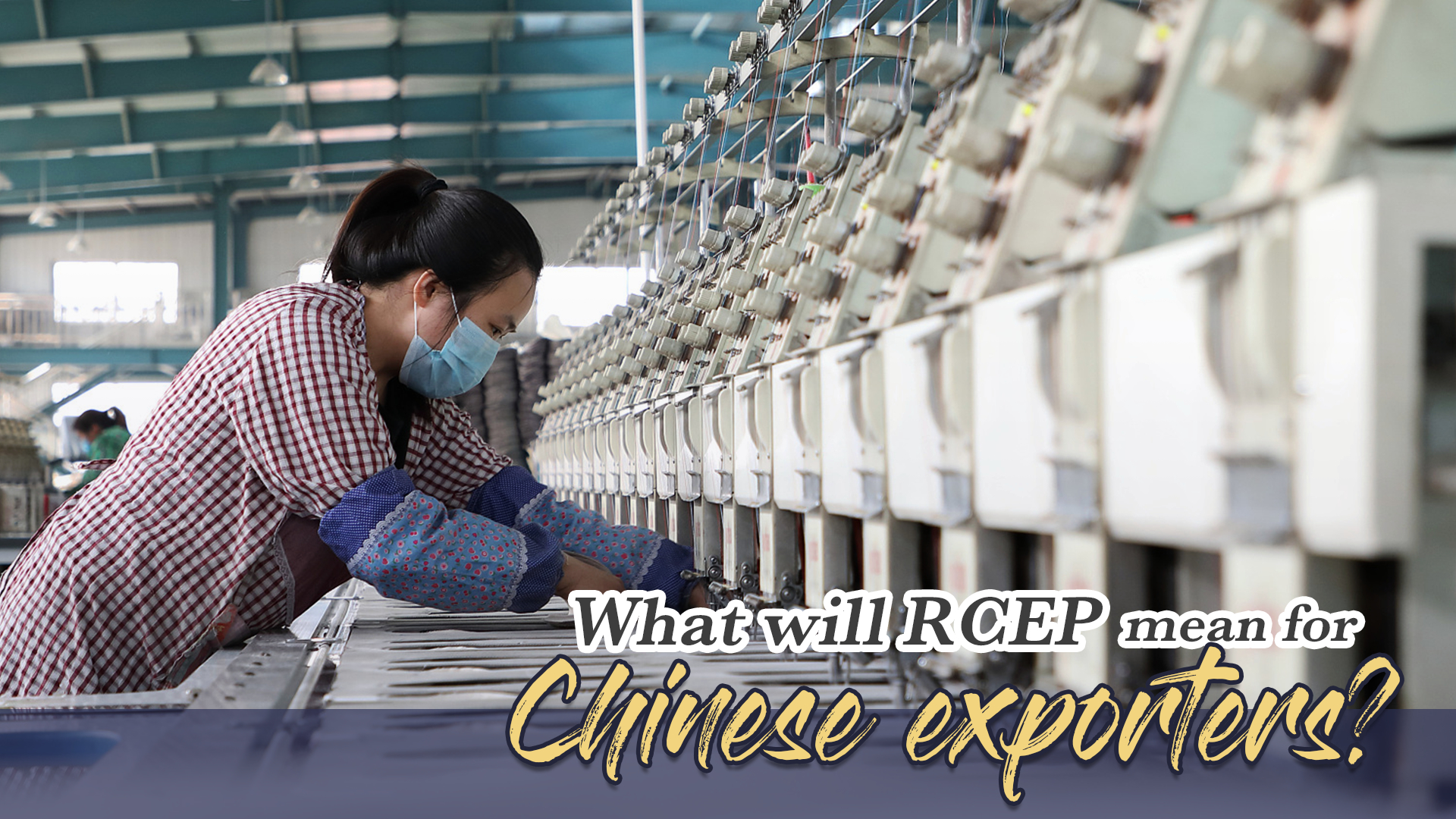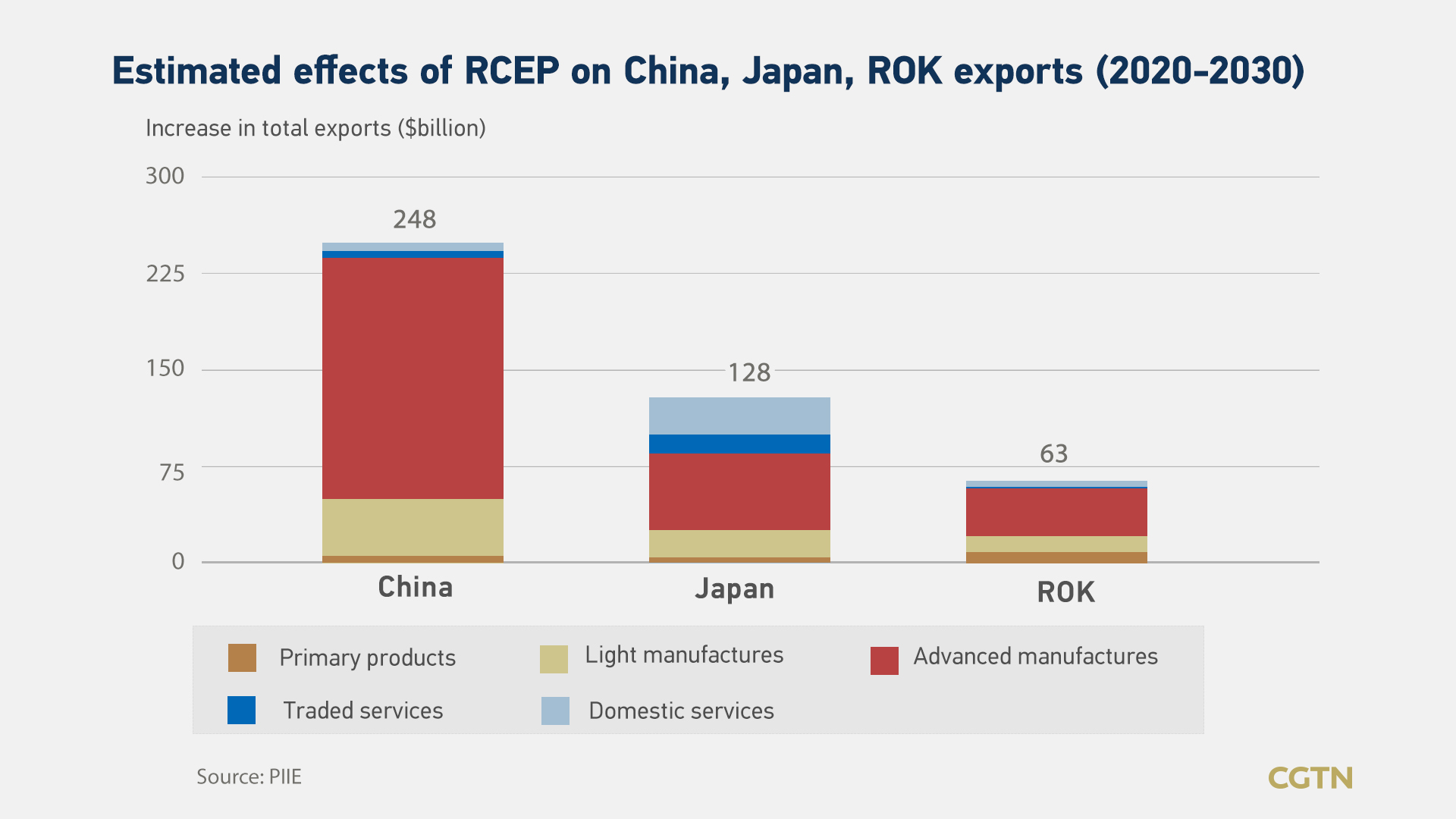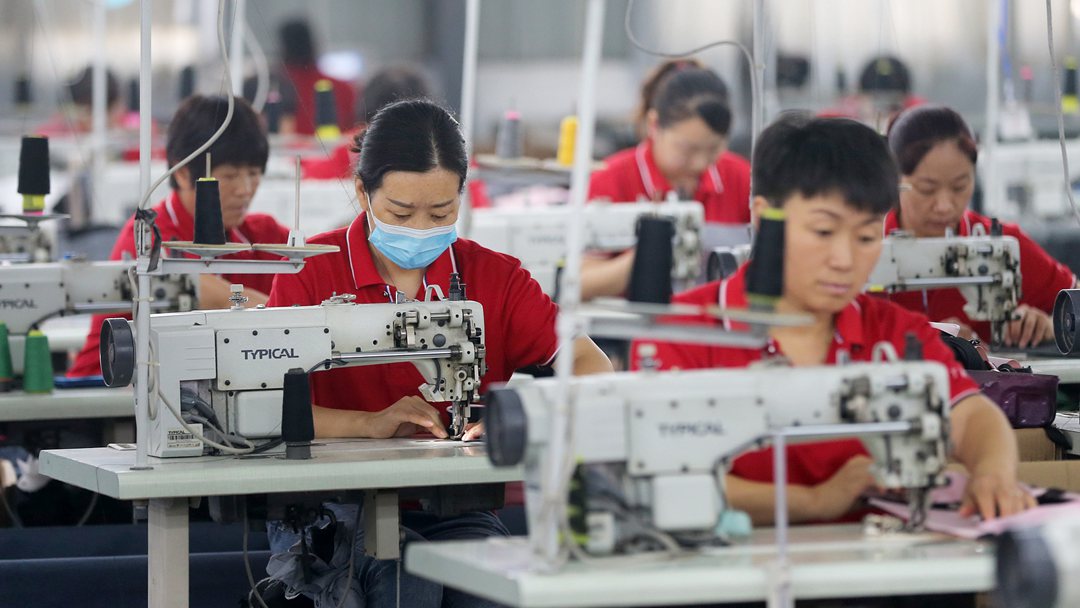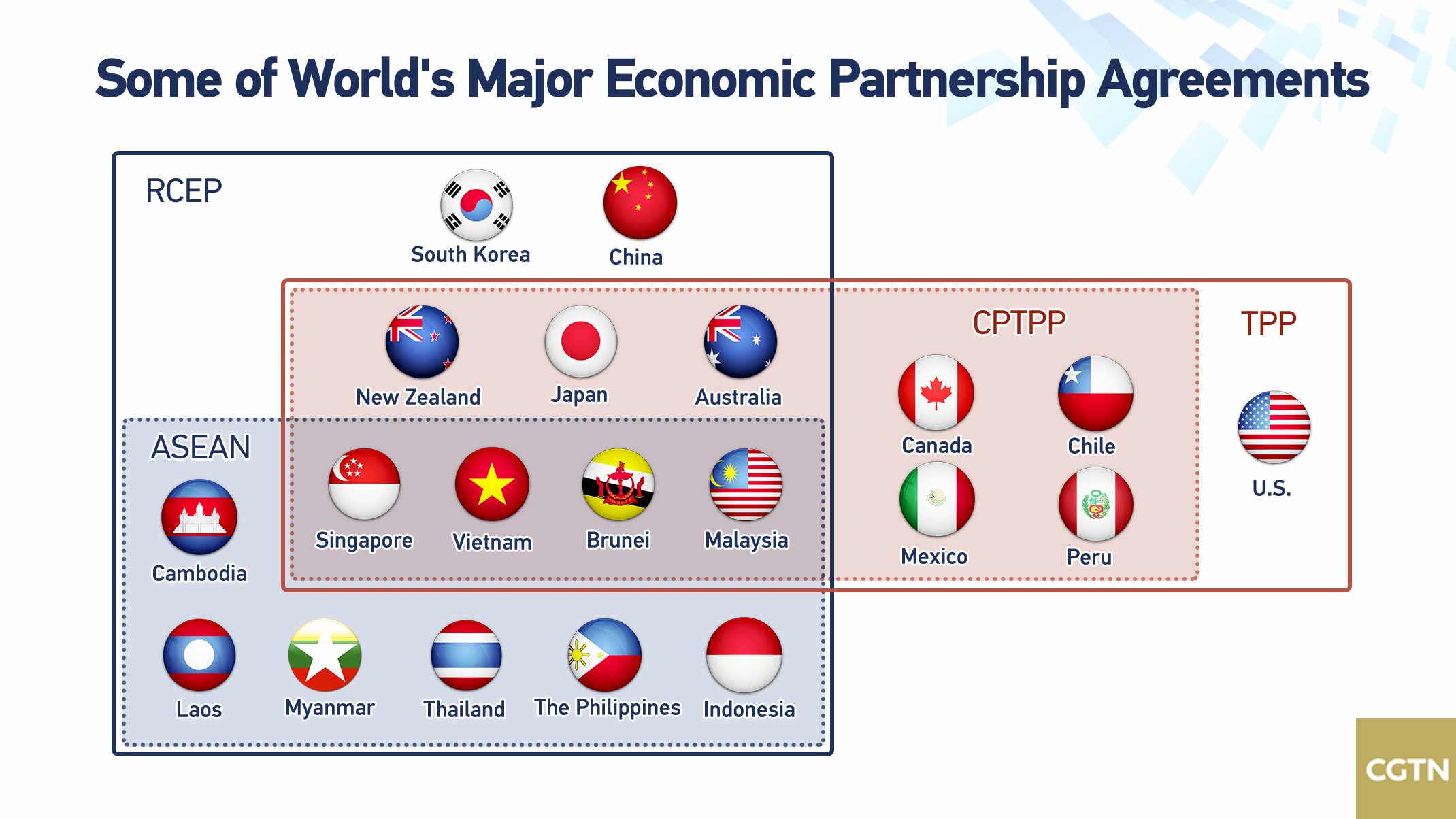
The Regional Comprehensive Economic Partnership (RCEP) agreement has been ratified by China and it is hoped that other member countries can speed up their progress and finally reach the threshold of entry into force, Minister of Commerce Wang Wentao said Monday.
"The sooner the agreement comes into force, the sooner the people of the member countries will benefit," Wang said on the sidelines of the annual national legislative session.
The agreement signed by 15 Asia Pacific countries in November 2020 needs to be ratified by six ASEAN (Association of Southeast Asian Nations) and three non-ASEAN member countries to enter into effect.
The signatories hope that the world's biggest free trade bloc, covering roughly 30 percent of both the global GDP and population, will be a boost for pandemic-hit economies across the region by progressively phasing out 90 percent of the tariffs on imports between signatories, as well as organizing multi-country supply chains and codifying new e-commerce rules.
It is expected to raise trade among members by $428 billion, add $500 billion to global exports, and improve the national income of the 15 countries by $186 billion by 2030, according to the Peterson Institute for International Economics (PIIE), a Washington-based think tank.
Chinese Premier Li Keqiang called the pact "a victory of multilateralism and free trade."
The deal is the culmination of Beijing's "decade-long quest for greater economic integration" with the region, Bloomberg reported last November.
It is forecasted to add $248 billion to Chinese global exports by 2030 and that exports in advanced manufacturing sectors will increase the most with over two-thirds of the increase from exports of electrical and electronic equipment, machinery and vehicles, according to the PIIE.

However, in a more open market, Chinese products will face fierce competition from low-end products made by Southeast Asian countries with comparative advantages in labor and land, and high-end products by developed countries like Japan and South Korea.
Ratifications by all members may also take time, and there are uncertainties as to whether Japan and Australia will be able to fully implement policies and market access due to geopolitical risks.
More open market and job opportunities
The mega trade deal will bring about market and employment opportunities to Chinese businesses as well as deepen cooperation in supply chains across the region, Song Wei from a research institution under the Chinese Ministry of Commerce (MOFCOM) told CGTN.
"The ROOs (rules of origin) accumulation is helpful to reduce the tariff threshold and promote Chinese enterprises to better enter the regional market," said Song, deputy director of the International Development Cooperation Institute at the Chinese Academy of International Trade and Economic Cooperation.
The accumulation principle allows the value content of a product's origin to cumulate within the 15-member region. A product that does not originate in participating countries in a bilateral free trade agreement (FTA) may be recognized as originating in the region under the RCEP and enjoy preferential tariffs.
For instance, a Chinese firm that exports shoes to any of the RCEP parties will be exempted from tariffs as long as over 40 percent of the raw materials in the final shoes are sourced from the bloc, Song explained.
Once the RCEP comes into effect, China's trade with its partners in this pact will increase from 27 percent to 35 percent of its total global exports, and more than one-third of its foreign trade goods will be tariff-free, according to the MOFCOM.
China's trade with the other 14 members of the RCEP was up 3.5 percent last year, reaching 10.2 trillion yuan ($1.58 trillion), according to China's General Administration of Customs.
The ASEAN has become China's largest trade partner, followed by the EU and the U.S., customs data shows. Bilateral trade surged by 7 percent despite the pandemic, indicating the ASEAN market has more potential for China.
China's service trade such as inbound travel and Chinese language teaching may also see explosive growth and job creation, according to Song. "The flow of labor force in the region will be more convenient, and new employment opportunities will be created for Chinese workers," she said.
This will enable multinational companies to arrange industrial layout more flexibly, establish a more refined and better-organized division of labor along the industrial chain, and reduce production costs, according to the MOFCOM.

Workers are rushing to finish foreign trade orders in a production line in Huaibei, east China's Anhui Province, July 15, 2020. /VCG
Workers are rushing to finish foreign trade orders in a production line in Huaibei, east China's Anhui Province, July 15, 2020. /VCG
Fierce competition in an integrated market
However, tariff exemptions among the RCEP members could also bring a large number of competitive foreign products into the Chinese market at lower prices, and therefore intensify the competition between Chinese and foreign firms.
RCEP groups developed countries such as Japan, South Korea, Australia and New Zealand, as well as 10 ASEAN members with comparative advantages in labor and land. "Chinese enterprises will face competition from low-end products from Southeast Asian countries and the suppression of high-end enterprises from Japan and South Korea," Song told CGTN.
"In the face of severe competition, Chinese enterprises must align with the international advanced industrial level, improve the quality of products and services, maintain the middle- and low-end industrial chain, and strive for the development of the middle- and high-end industries."
Wang Dan, the chief economist at Hang Seng Bank China, said China will pay more attention to the production of intermediate products, and shift some final production elements to ASEAN and other foreign locations.
She explained that "the production of intermediate products such as auto parts, semiconductors and cotton yarn is easier to achieve [via] mass production and automation compared with final products," which can help enterprises obtain economies of scale and lower costs.
The shift will be facilitated by the RCEP, Wang said.
But it is not about the industrial chain leaving China, as the shift "will have little impact on China's industrial chain because 90 percent of the global trade is in intermediate goods and less than 10 percent is in final consumer goods."
"It is the transformation and upgrading of China's industrial chain," she noted.
Ratifications by all members may take time
All the signatories are actively pushing for early activation of the pact which is expected to come into force by the end of this year after ratification by six ASEAN economies and three non-ASEAN countries, the MOFCOM said in January.
Japan approved a bill to ratify the pact last week and said it will become the "foundation of trade in Asia." It is China's fourth largest trade partner, with bilateral trade increasing by 1.2 percent in 2020, according to customs data.
The East Asian country is a member of both the RCEP and the Trans-Pacific Partnership (TPP). The TPP will likely be revived by the Biden administration, according to Song, who believes Chinese companies may be targeted in the negotiations between the U.S. and Japan.

"Faced with the prevalence of unilateralism and protectionism, some RCEP members are unable to fully implement policies and market access," she cautioned, mentioning Australia as a possibility.
Impacted by the deteriorating China-Australia relationship, China's imports from Australia saw an annual decline of 5.3 percent in U.S. dollar terms, according to Chinese customs data from mid-January.
"Therefore, when conducting overseas projects, Chinese enterprises should do a good job in assessment and risk prevention, and learn to protect their own interests by legal means," Song said.
The government should help businesses become well-informed about relevant policies and obtain preferential treatment of host countries, and provide them with legal services and early warning of risks, she added.
China has made substantial progress in comprehensively advancing technical preparations for the implementation of ROOs and tariff concessions under the RCEP. As much as 85 percent of the 701 binding obligations stipulated in the pact are ready to be enforced, the State Council said after an executive meeting in early February.

